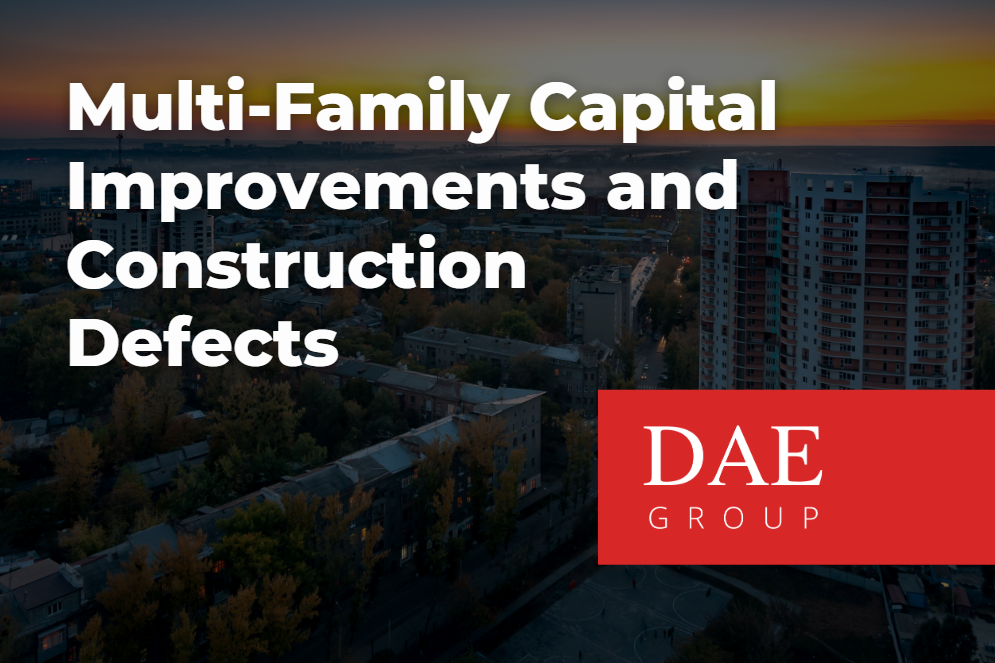Capital improvements for multi-family projects preserve and enhance property value. They can reduce attrition, help increase rents and even lower expenses for maintenance, repairs and replacement.
The also help properties remain competitive, or in some cases, help properties gain a competitive advantage over competing properties.
What is included in capital improvement plans?
Multi-family capital improvement include such things as roof repair and replacement, lobby/corridor and public space enhancements, stairwell and elevator enhancement, exterior skin improvements, sealing and striping parking lots, exterior landscaping improvements, adding/improving amenities, water & mold abatement and in-unit upgrades such as balcony enhancement, upgrading lighting, modernizing plumbing and fixtures, installing new windows, upgrading flooring, painting and installing new hardware, updating kitchens/bathrooms and adding new appliances.
Most capital improvement projects result from normal wear and tear on a building and its components. Sometimes, however, capital improvement projects are triggered by construction defects.
What is a construction defect?
A construction defect is generally defined as a defect in the design, the workmanship, and/or in the materials or systems used on a project that results in a failure of a component part of a building or structure and causes damage to person or property, usually resulting in financial harm to the owner.
“We have dealt with hundreds of projects nationwide, and construction defects usually stem from deviations in three key areas: deviations from the plans, deviations from approved manufacturer-recommended materials; and deviations from standard field-quality practices,” said Dan Ezra, DAE Group, principal. “ And, of course, the labor shortages, lack of adequate trade contractor training, poor supervision and hyped-up scheduling are also contributing factors to construction defects.”
What is the benefit of capital improvements?
Capital improvements for multi-family projects, whether stemming from normal wear and tear or from construction defects, are a smart investment for property owners. But owners often don’t have the time or expertise to deal with the technicalities of a multi-family capital improvement project, or deal with the fact finding, analysis, remedy, and sometimes litigation of construction defects.
That’s where Owner’s Representatives, such as the premier Owner’s Reps at DAE Group can help. They have the experience and the bandwidth to take a project through all phases of development – concept, feasibility, design, procurement, construction and post construction.
If a project involves construction defects DAE Group has the expertise to conduct fact finding tasks, review the site, review all documents, interview all involved parties, identity the causes of the defect, determine the most cost effective method of remediation and scope of work, secure estimates and manage the repairs. And then organize the facts into a readily available format to be used in mediation, arbitration, litigation, or simply to help the owners understand the complexity of the issues as related to any disputes.
Whatever a project requires, DAE Group provides valuable assistance including planning and determination of project scope, creation of pro formas and ROI calculations, team assembly, value engineering, securing permits, ensuring the project meets local and municipal requirements, fielding request for proposals, bids and hiring vendors such as contractors, engineers, and architecture firms, managing the project budget and schedules, including all sub-budgets and sub-project schedules, overseeing the actual demolition and construction, working with tenants and obtaining final certificates of occupancy
“We have earned a reputation as the no-nonsense, let’s be direct, let’s be fair, let’s get this project completed on time and on budget owner’s representatives,” said Dan Ezra, DAE Group, principal.
“We represent the interests of the owner. We are their eyes and ears, their boots on the ground so things so smoothly, quality is maintained and there is minimal disruption to the tenants.”
The DAE Group team went on to offer these key insights for multi-family capital improvements and construction defects including:
- Get buy in from all of the people involved including the property manager, property maintenance, office folks, marketing teams and residents.
- Keep communication lines open and make it easy for residents to voice complaints or concerns.
- Promote the benefits of your capital improvements before, during and after the project for maximum impact.
- Have an up-to-date and accurate competitive analysis so your pro formas are as reliable as possible from a competitive standpoint. Properties do not exist in a vacuum.
- Know as best you can which capital improvements provide the highest ROI. Think locally here, in your competitive geographic. It’s important to know which upgrades give you the most bang for the buck.
- Plan, way in advance, for capital improvements as best you can. You can anticipate many breakdowns before they become costly fiascos.
- Get at least 3 estimates. Check references.
- For construction defects start early and document every step of the process. Seek professional if the costs of fixing the defect are great. Anticipate litigation.
- Typical construction defects include improperly constructed structural components, water leakage from improperly designed or constructed building roofs and envelopes which include windows, doors, and siding. Also look for poorly designed, built or installed balconies ad concrete foundations.

